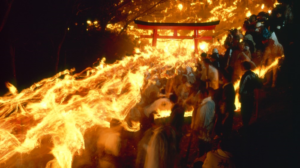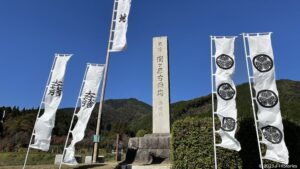Kairakuen Garden, Three Thousand Plum Trees is Breathtaking
Kairakuen Garden Park is located in Mito city in Ibaraki Prefecture about one hour train journey from Tokyo to the east. It is one of the finest three parks in Japan, following Kenrokuen in Kanazawa and Korakuen in Okayama. In early spring, the light pink, red, and white colors of over one hundred different plum flowers are in full bloom and their fragrance spreads far and wide across the park.
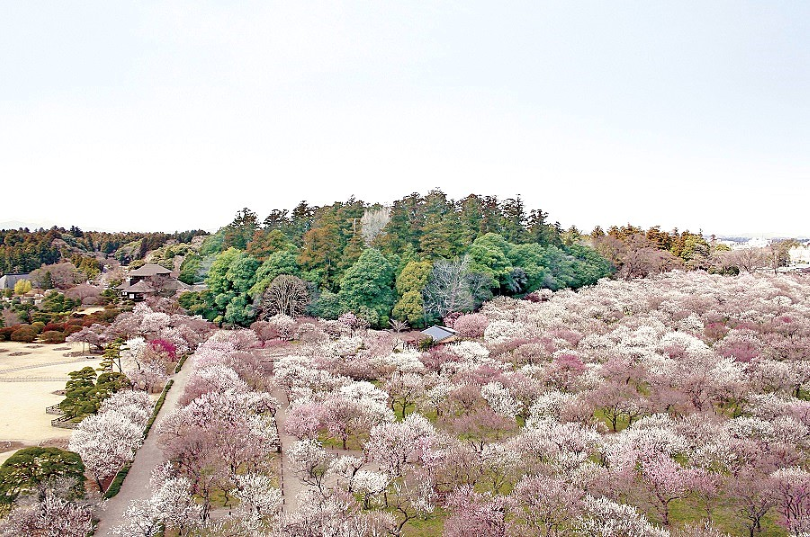
The Founding Principles of Kairakuen
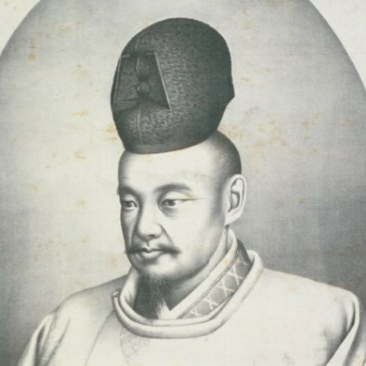
@ Main Library, Kyoto University
Kairakuen was landscaped near Senba Lake in 1841 by the 9th Lord of the Mito domain, Tokugawa Nariaki (1800-1860, 徳川斉昭), hoping to provide his retainers and people have pleasures here. The ‘Kairakuen Ki-hi’ (Kairakuen Record Stone) describes Nariaki’s thoughts about the purpose of establishing Kairakuen (rough translation):
The sun and the moon in the sky, the mountains and rivers on the earth - everything is made up of the harmony of yin and yang. By maintaining a balance, humans can become virtuous people. The key to being human is maintaining a healthy body and mind, being in harmony with nature, and relaxing. Enjoying flowers and the moon in your spare time and resting your spirit is important. Therefore, we planted Japanese apricot trees in the scenic area of Mito, naming the garden ‘Kairakuen’ in the hope that people from all over Mito would visit and enjoy music, poetry, and conversation with friends, and that it would be a place where they could refresh their minds and bodies.
Story of the Mito Domain
The Mito domain was founded in 1609 by the 11th son of the first Tokugawa shogun, Tokugawa Ieyasu (1543-1616, 徳川家康), as a key to controlling the various powerful lords in the Tohoku area, northern Japan. It was one of three privileged branches of the Tokugawa family, called “Gosanke”, alongside the Owari domain in Nagoya and the Kishu domain in Wakayama, which had the specific role of providing a shogun in case of need. It was also an important location for maritime transport, with Nakaminato Port.
The Challenges of Lord Nariaki
In 1829, Nariaki became the 9th lord of the Mito Domain. During the latter half of the Edo period, Japan experienced significant social and economic upheaval. The merchant economy was expanding, yet social unrest was increasing because of frequent peasant uprisings among famished farmers and the repeated appearance of foreign ships approaching Japan’s shores. The financial state of the Mito Domain was equally precarious, primarily due to three factors:
- The enormous costs associated with the research and compilation of the "Dai Nihon Shi" (Great Japanese History), a monumental history book documenting the reigns of Japan’s emperors from the first Emperor Jimmu to the 100th Emperor Komatsu. This was initiated in 1657 by the second lord of the domain, Tokugawa Mitsukuni.
- The expenses tied to the domain’s unique "Edo Jofu" system, which required the Mito lord to reside in Edo to serve the shogun, unlike other domains that alternated attendance between Edo and their domain lands.
- While the Mito Tokugawa was one of the “Gosanke,” its rice yield was only 360,000 koku (in 1701), less than the 620,000 koku of the Owari Tokugawa family and the 560,000 koku of the Kii Tokugawa family, the expenses required to maintain the status of the Mito Tokugawa family as one of the Gosanke.
- In addition, the Great Tenpo Famine of 1833-1839, which struck shortly after Nariaki became the lord of the Mito domain, led to widespread starvation in farming villages, causing numerous deaths and frequent uprisings by desperate peasants.
Nariaki’s Reforms
As the new feudal lord, Nariaki declared that his administration would seek (i) a benevolent government for the people and (ii) abolish the Edo system of fixed residence and replace it with a rotation system. He initiated reforms in the Mito Domain by appointing pro-reform retainers such as Fujita Toko and Aizawa Seishi. His first measure was to enforce a policy of simplicity and frugality, prohibiting extravagance.
- He abolished the evil law about the tax system(*) for the good of the people, though it took him 15 years.
(*) The tax system for three minor grains: The Domain bought the three minor grains (soybeans, foxtail millet, and perilla) from farmers at low prices during the autumn harvest and resold them to the farmers at significantly higher prices the following spring. This allowed the domain to earn more tax on the difference. - He significantly reduced their numbers to address one of the major causes of the domain’s financial struggles - the high costs associated with maintaining retainers in Edo. Out of the 2,500 retainers stationed in Edo at the time, he made 200, equivalent to 10% of the total, return to Mito.
- He established the Mito Domain School, Kodoukan, and the Kairakuen garden as places for relaxation and an educational institution for the retainers' children.
- The frequency of foreign ships approaching the Mito domain, facing the Boso Peninsula, increased. In 1824, 12 British whalers landed on its shores, prompting the domain to focus on strengthening national defense. One effort was military training called ‘Oitorigari,’ held nine times, where 3,000 samurai in armor and 20,000 foot soldiers hunted pheasants and mountain birds to hone their combat skills. The domain also began manufacturing cannons under Nariaki’s leadership. Despite setbacks, 120 craftsmen succeeded in producing them. In 1853, when Commodore Perry’s U.S. fleet arrived at Uraga, Mito presented 74 cannons to the shogunate. They also built the ‘Asahimaru,’ a Western-style warship, for the shogunate navy.
The Mito Clan’s Tempo Reforms, led by Nariaki, became a model for the Tokugawa shogunate and other domains.
Kodokan and Kairakuen
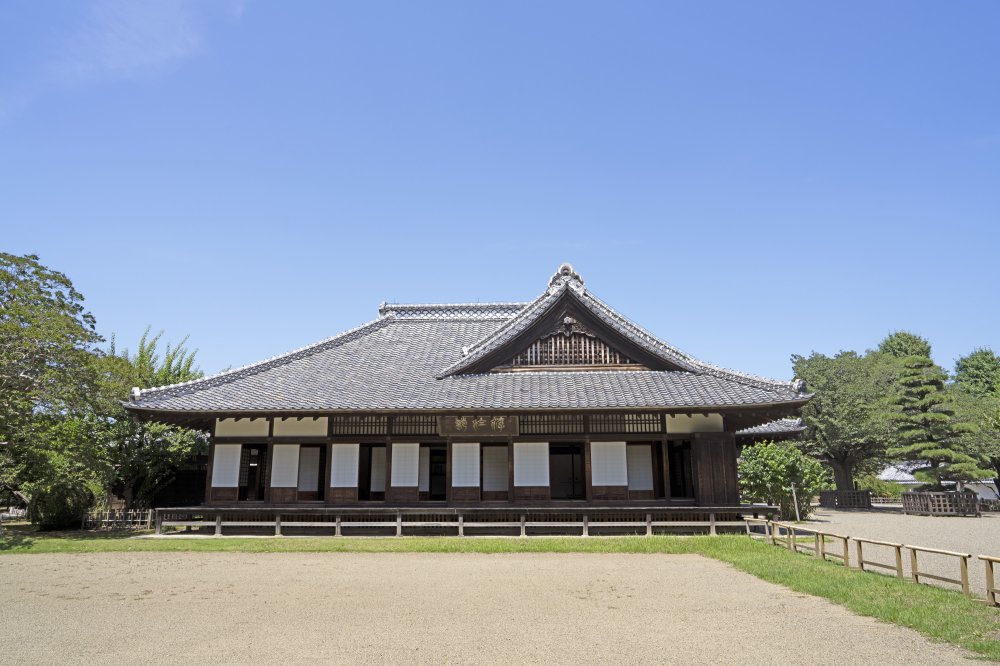
Nariaki was also keen to educate his retainers and their children, establishing the domain school ‘Koudoukan to develop human resources to promote the domain's policies. Retainers’ children aged 15 and over studied a broad curriculum, including Confucianism, etiquette, history, astronomy, mathematics, geography, Japanese poetry, and music, to martial arts such as swordsmanship, spearmanship, military science, firearms, horsemanship, and swimming. The goal was to enhance both knowledge and skills and people's qualities as human beings. Nariaki emphasized integrating learning at Kodoukan with relaxation at Kairakuen. This policy was applied to his own family, including his seventh son, Shichiromaro (later the 15th shogun, Tokugawa Yoshinobu), was received a gifted education.
The Decline of Nariaki
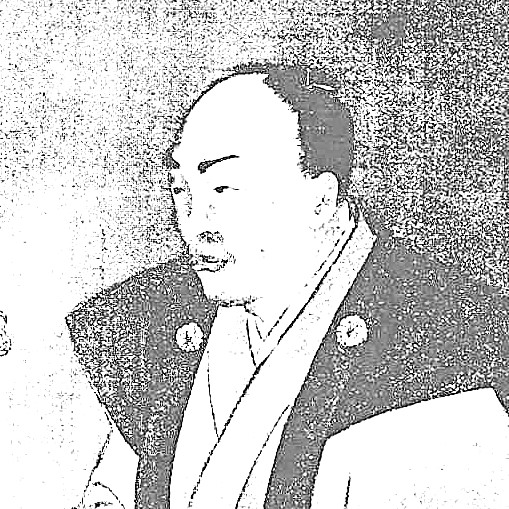
In 1855, Nariaki became a military reform advisor to the shogunate and worked energetically to strengthen national defense. However, the same year, a major earthquake killed Nariaki's advisors, including Fujita Toko (1806-1855, 藤田東湖), who had a high level of coordination ability. Nariaki's political power declined, and the Mito clan was plagued by internal strife and conflict. In 1857, Abe Masahiro, head of the council of elders, passed away, marking the shogunate’s shift toward opening the country. In July 1858, the Japan-US Treaty of Friendship and Commerce was signed without imperial sanction, led by the chief minister, Ii Naosuke (1815-1860, 井伊直弼). Opposing opening the country, Nariaki went to Edo Castle without prior approval to confront Ii Naosuke, who was spearheading the policy of opening the country. Because of this, he was imprisoned in Mito's residence. Two months later, after Emperor Komei (1831-1867, 孝明天皇) issued a direct edict to the Mito Domain to request the shogunate reforms bypassing the shogunate, an enraged Ii Naosuke placed Nariaki under indefinite house arrest. In 1860, during the Mid-Autumn Festival, Nariaki died suddenly while still confined. The Tokugawa Gosanke lords were not punished by the Shogunate, with Nariaki being a notable exception. His house arrest highlights both the intensity of his determination to reform the shogunate in response to Western pressure and the precariousness of his position after the loss of his key right-hand advisors.
A Great Lord, Nariakira
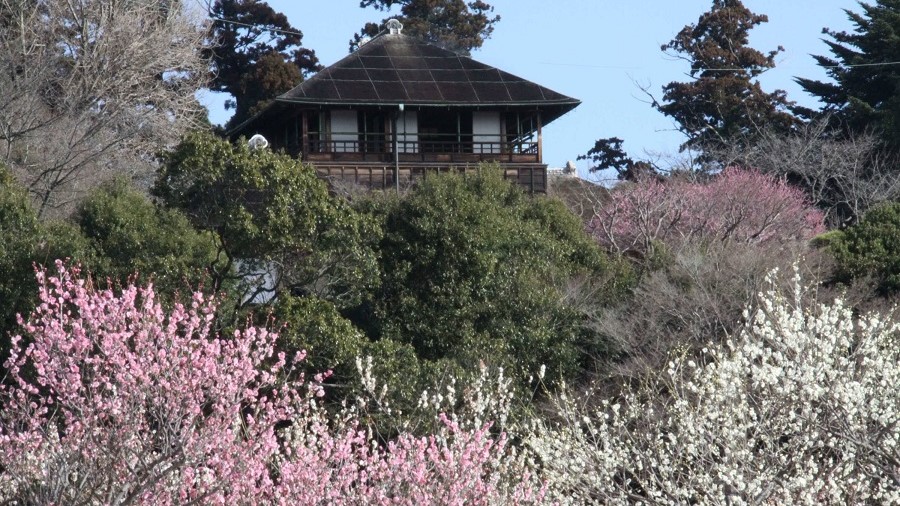
Nariaki fiercely spearheaded the reform of the Mito domain's administration and provided his opinions to the Shogunate without hesitation. After his death, renowned for his achievements, he was posthumously named Rekko, which means fierce or severe lord, after his death. At Kairakuen, you will find the Kōbuntei, a two-story-three-floor wooden building, personally designed by Nariaki as a place to enjoy with his people. On the third floor, the eastern hall was used to hold the Yoro-no-Kai, a gathering for retainers aged 80 and above, as well as commoners aged 90 and above, to care for and respect them, and Nariaki presented them with commemorative gifts. Meanwhile, it is said that a poetry party was held in the western hall. In spring, opening the sliding doors of the shoji screen, the fragrance of Japanese apricot blossoms would have filled the room.
When visiting Kairakuen and Kodokan, take a moment to reflect on Nariaki’s remarkable achievements. Additionally, don’t miss the Japanese Apricot Festival, held from mid-February to late March, a truly worthwhile experience.
Tokugawa Nariaki Timeline
| 1800 | Tokugawa Nariaki was born | Age=1 |
| 1824 | 12 British whalers landed on Mito domain's shores | 25 |
| 1829 | Tokugawa Nariaki became the 9th Lord of Mito Domain | 30 |
| 1833 | Tokugawa Nariaki first returned to Mito from Edo | 34 |
| 1833-1839 | Great Tenpo Famine | 34-39 |
| 1841 | Kodokan School was established | 42 |
| 1842 | Kairakuen Garden was opened | 43 |
| 1853 | Commodore Perry of the US entered port at Uraga at the entrance to Edo Bay | 54 |
| 1853 | Tokugawa Nariaki presented 74 cannons to the shogunate | 54 |
| 1855 | Tokugawa Nariaki became a military reform advisor to the shogunate | 56 |
| 1855 | Nariaki's Retainer, Fujita Toko, died by the great earthquake | 56 |
| 1857 | Abe Masahiro died | 58 |
| 1858 | The Treaty of Amity and Commerce between the United States and Japan was concluded without an imperial sanction in 1858 | 59 |
| 1858 | Three major federal lords entered Edo castle without the permission in advance | 59 |
| 1858 | The Emperor Komei’s letter sent to Mito domain | 59 |
| 1859 | Tokugawa Nariaki was placed under indefinite house arrest | 60 |
| 1860 | Ii Naosuke was assassinated in front of Sakuradamon gate by Mito Retainers | 61 |
| 1860 | Tokugawa Nariaki passed away | 61 |
| 1867 | Tokugawa Yoshinobu was appointed the 15th Shogun | - |
| 1867 | Taisei Hokan, Tokugawa's political power was officially returned to Emperor Meiji | - |
Recommendations to visit
Kairakuen Garden
- Access: 70 minutes by limited express (Hitachi or Tokiwa) on the Joban Line from JR Tokyo Station to Mito Station. A 15-minute walk from JR Mito Station. A 20-minute Ibaraki Bus to Kairakuen.
Kodokan
- Access: 70 minutes by limited express (Hitachi or Tokiwa) on the Joban Line from JR Tokyo Station to Mito Station. A 15-minute walk from JR Mito Station.

